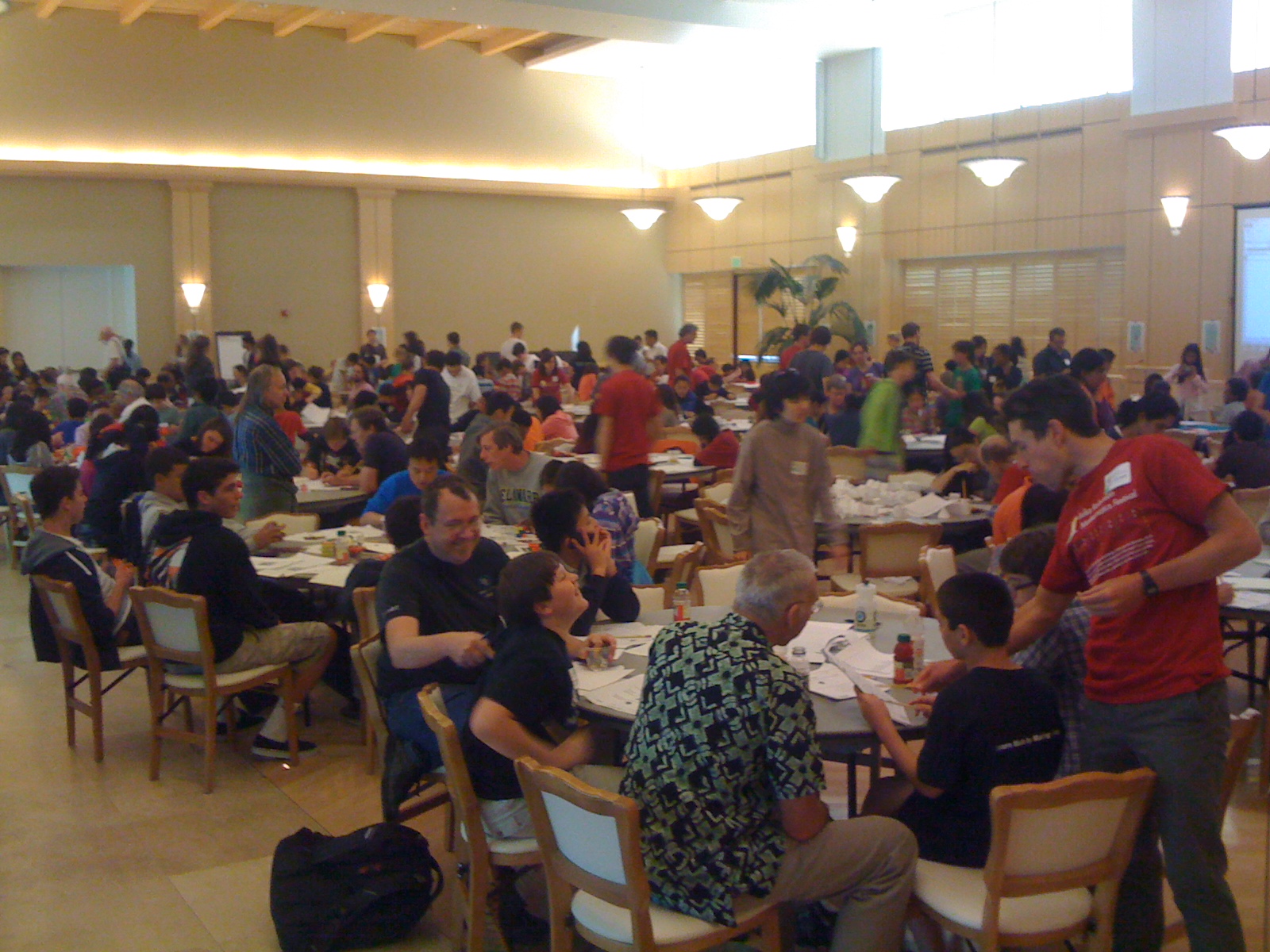It was a beautiful May morning, and McCaw Hall in the Arrillaga Alumni Center at Stanford University was jam packed and buzzing with excitement. About 250 youngsters aged 7 to 17 had come in search of challenges and thrills, and they weren't disappointed by the festive atmosphere and friendly vibe.
From the refreshment area, I could see over thirty large round tables offering a bewildering variety of activities and explorations to try out, from "Candy Conundrum" and "Frogs and Toads" to "Space Chips" and "Instant Insanity." I wanted to visit them all, but there were only two hours left. Maybe I should I start with "Area Attack!" or "Wolves and Sheep"? Or was it time for me to finally master the basics of the Rubik's Cube?

Then reality kicked in. It was actually time to go back to my own assignment, at one of two tables marked "Card Mathemagic," for the second shift. In truth, I wasn't a kid anymore, though part of me wished I was. I was a facilitator, and I'd come a long way---from Atlanta---for the privilege of spending four hours interacting with smart kids who were eager for intellectual stimulation, at the Julia Robinson Mathematics Festival. One table over, a real magician Jordan Gold (@jordangoldmagic) wowed the crowds with his talents and a big collection of educational puzzles and toys.
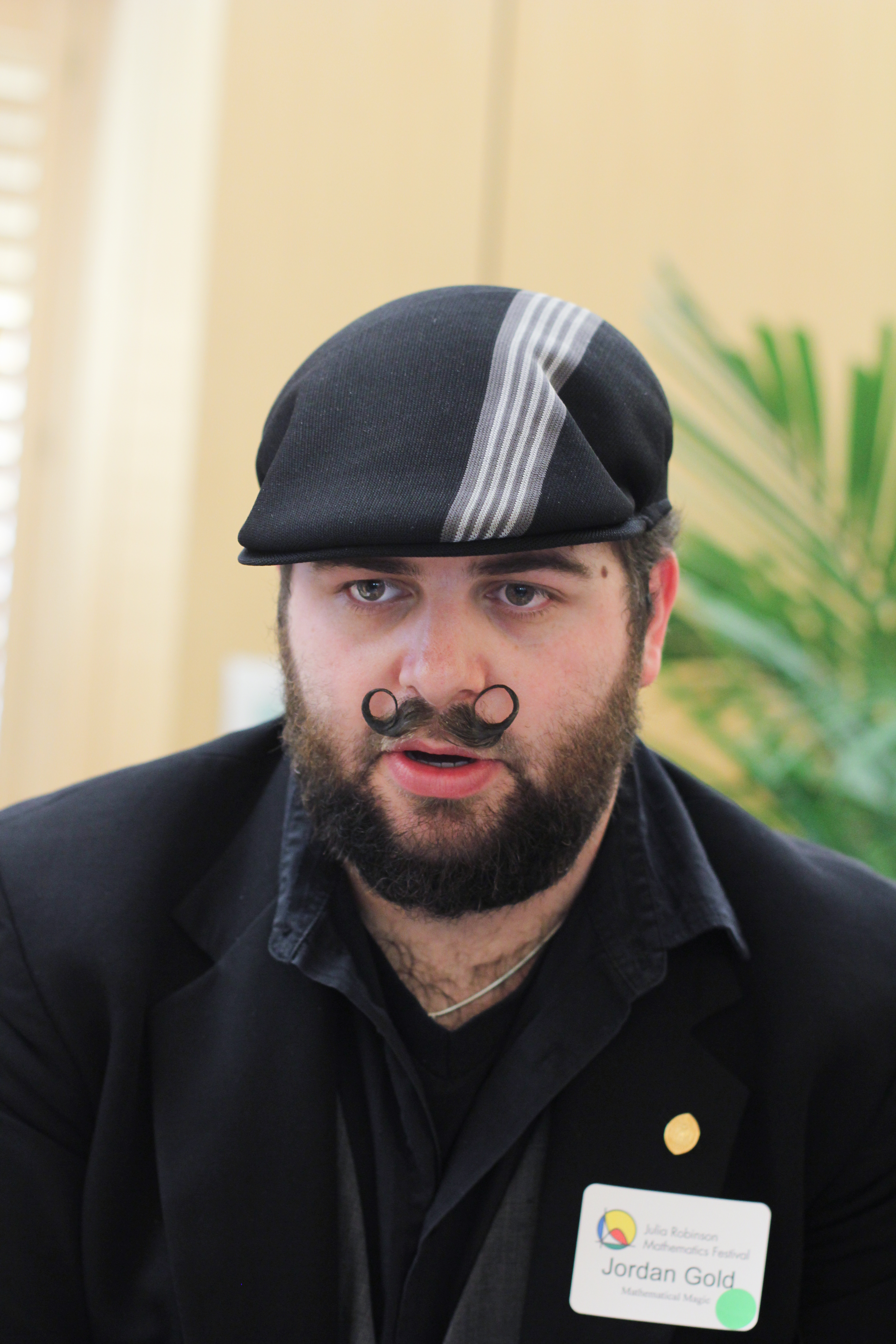
The morning had started with Vineet Gupta and me going over a couple of easy but not well known mathematical card tricks together, before he set up to demonstrate these and engage youngsters at a neighboring table.
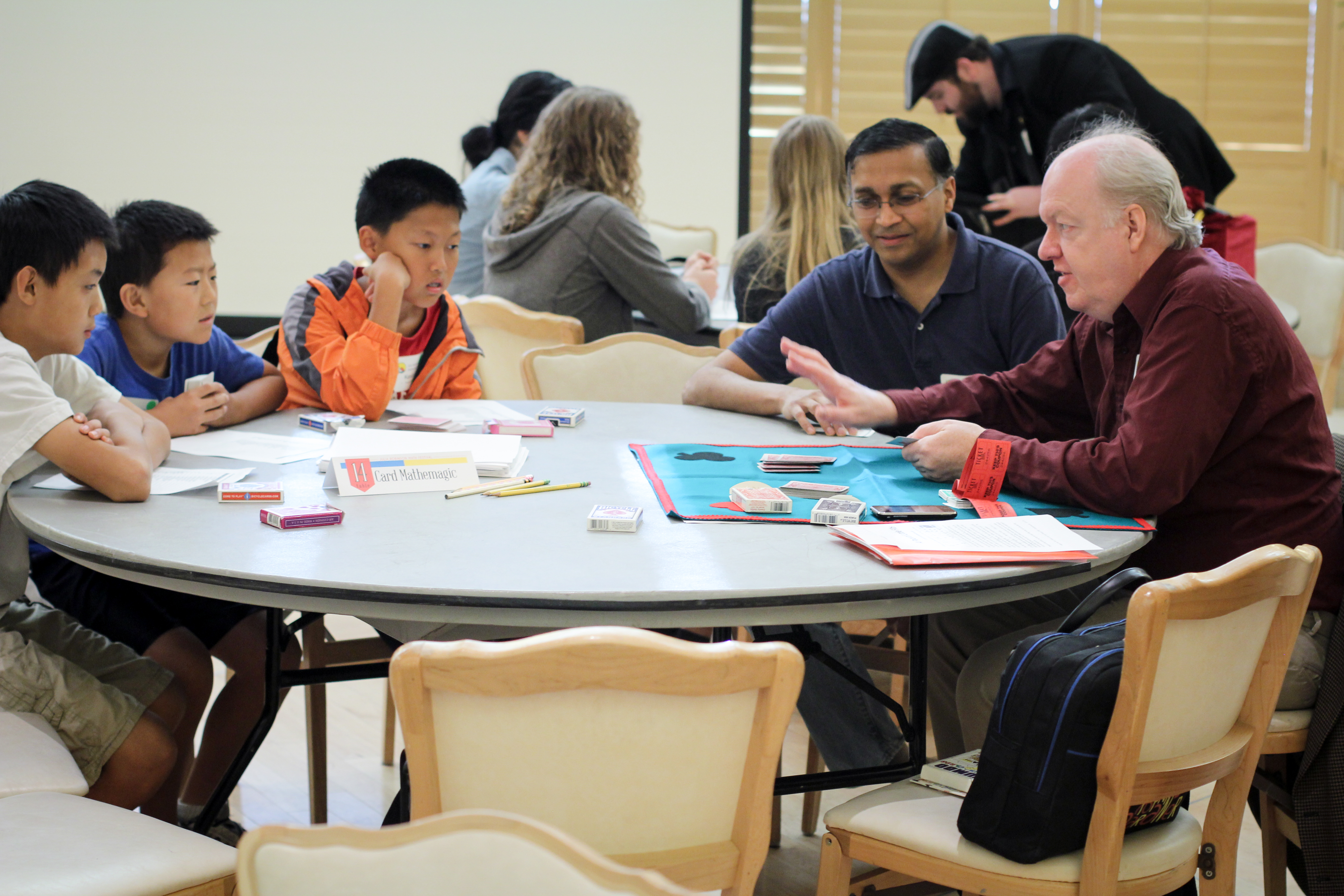
From then on we both had a steady stream of visitors, some alone, others with adults in tow. "What's your favorite flavor of ice cream?" was our usual opening line. Based on prior experience, I was confident that most responses would be Chocolate, Vanilla or Strawberry, but I soon learned that things are different in this part of California. Fully half of the time, I was told Mint Chip, a flavor rarely mentioned to me in the past.
Mint Chip has eight letters, so eight cards are dealt out to a pile from a shuffled quarter deck, spelling out each letter one by one, to represent one scoop of ice cream, then the rest are dropped on top as a topping. This is repeated twice more. At the conclusion we had the kids turn the final top card into a specific card we'd name. It always worked. Huh? It's really based on mathematics.
One of our early converts, a young girl named Jodi, was totally hooked. She took great delight in learning how to do it and then holding court at Vineet's table. She showed it to all the other kids who stopped by, thereby proving the old adage that the best way to understand something is to teach it.
The titles of many of the activities betrayed their mathematical underpinnings, from "Insert Sum Here," "Estimation Games," "Folding Fractals," and "Trapezoidal Numbers," to the always-surprising "Primes in Evenland."
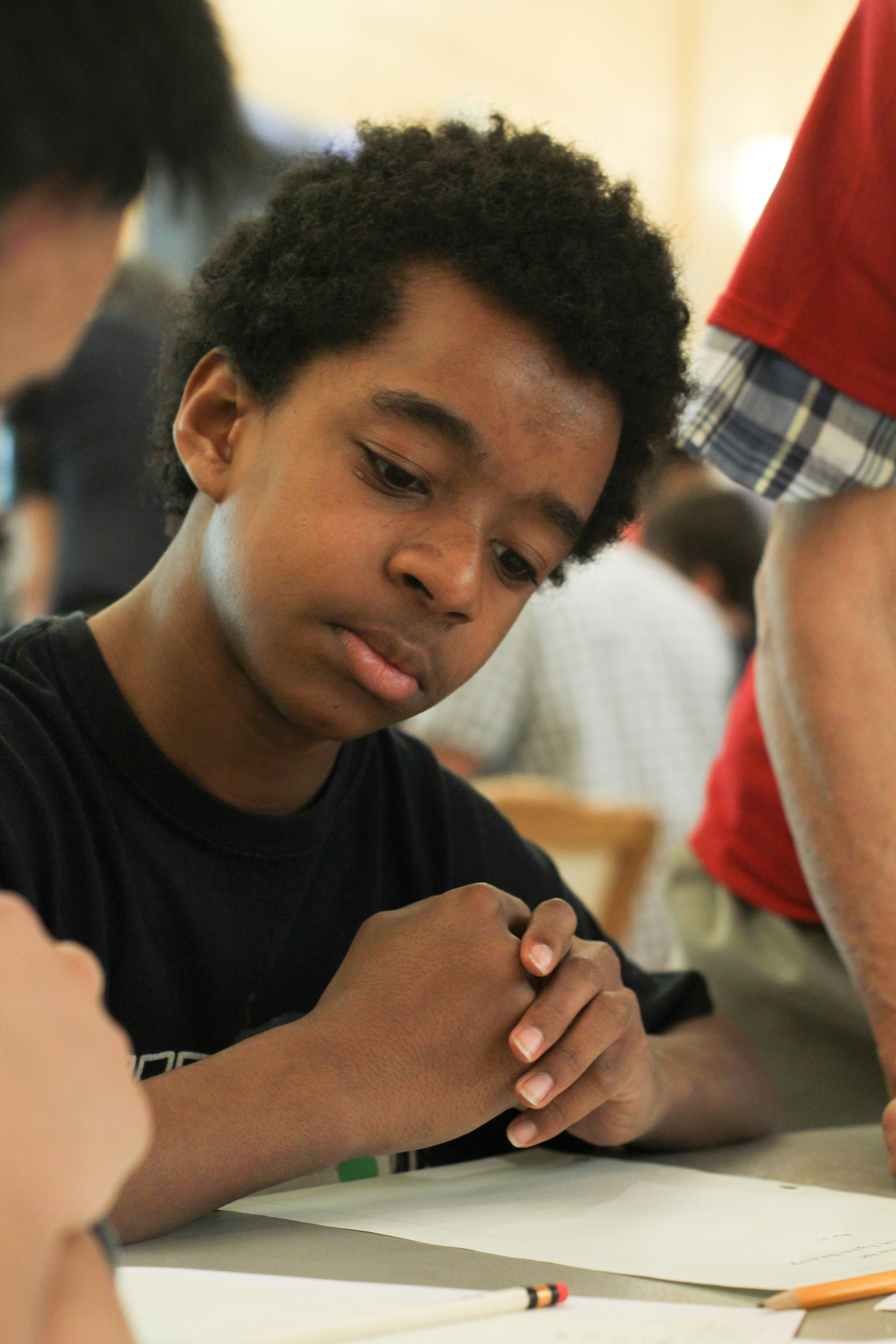
The festival's origins go back to a high school opportunity that co-founder Nancy Blachman had in Palo Alto in the 1970s. She recalls. "I have fond memories of working on qualifying problem sets for the Saint Mary's Math Contest. The first few problems were usually pretty straightforward and easy, and solving one would boost my confidence in tackling the next. I appreciate that I was given at least several weeks from the time I received a problem set until I needed to turn in my solutions. Students who received enough points on the year's qualifying problems were invited to the Saint Mary's Math Contest in Moraga, toward the end of the school year."
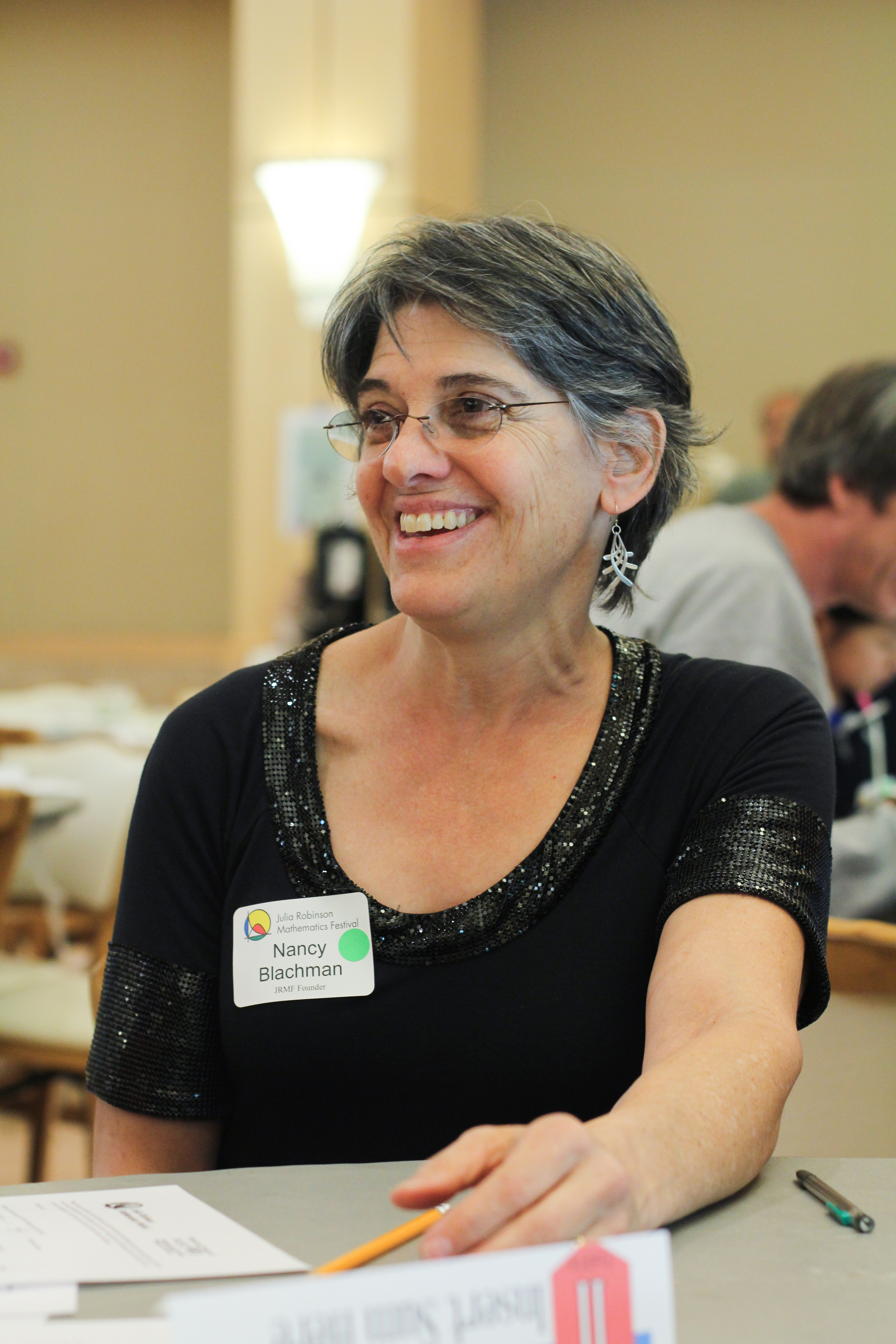
That, however, was a less than positive experience for her. "I remember that I didn't enjoy the Saint Mary's Math Contest in which I sat at a desk alone and spent several hours working on problems. I didn't work well under pressure and I suspect that there are many others like me."
Curious to know if the long-defunct Saint Mary's problem set model might work today, Blachman ended up hooking up with Joshua Zucker, who had participated in another contest in Los Angeles at which he won a book from the Saint Mary's Math Contest. He suggested creating a contest incorporating features that made the Saint Mary's Contest inspiring and memorable to her. Hence, in the spring of 2007, the two of them started the Julia Robinson Mathematics Festival.
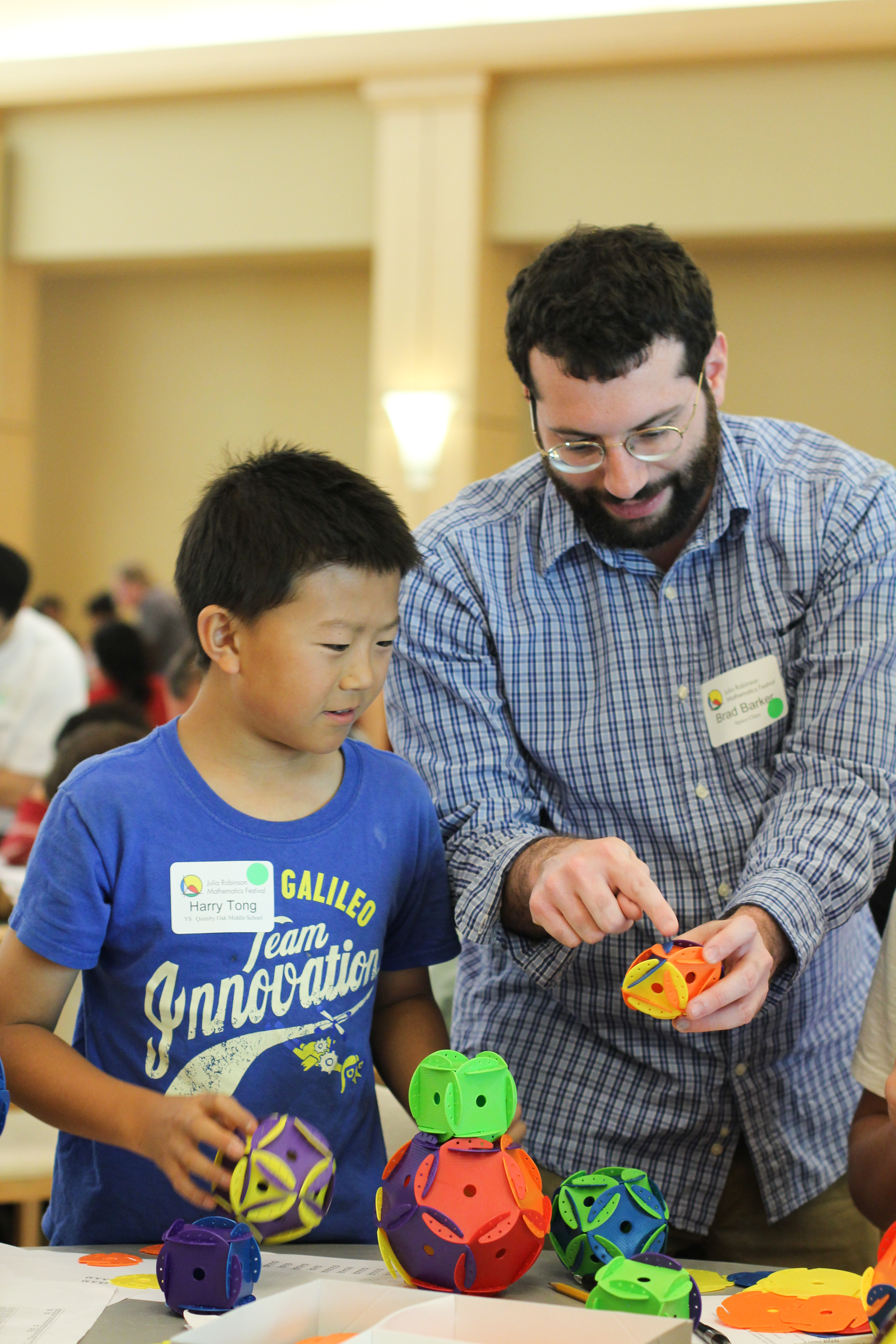
The festivals now take place at several locations throughout the US, and typically feature over two dozen tables with thought-provoking activities, puzzles, games and problems. Unlike in more standard competitive contests, here collaboration is actively encouraged, and this plays to the children's natural instincts and strengths. Zucker recalls, "Nancy and I imagined an experience that would give an opportunity to engage in creative solving of difficult problems, but in an environment that's much more friendly and collaborative instead of competitive."
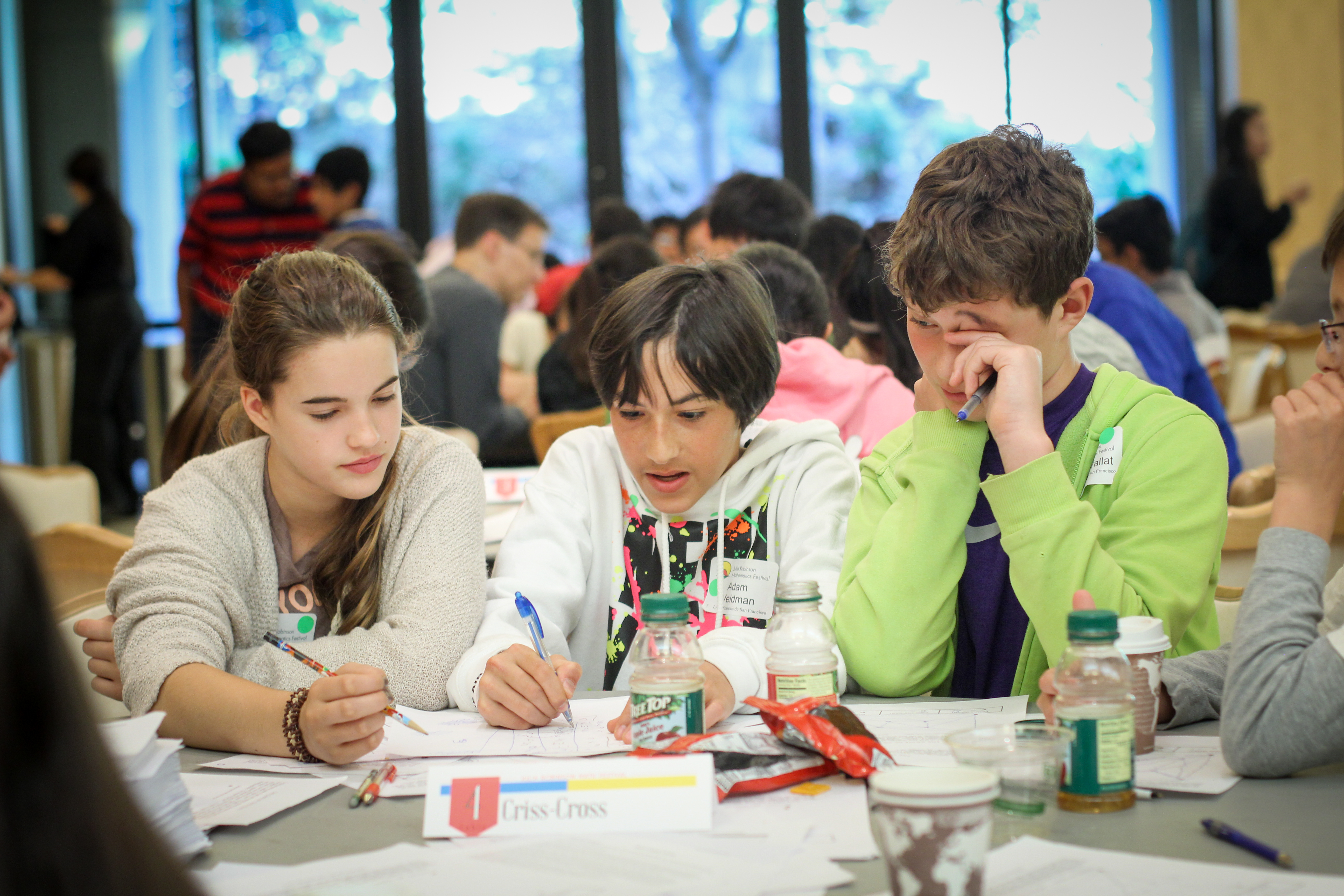
For the children to have the richest experience, another type of collaboration needs to take place, in the form of skillful direction provided by hand-picked facilitators. "The goal is to provide collaborators -- mathematicians who can ask leading questions without giving away too much, and who share their excitement about the mathematical ideas that the students uncover," Zucker says. "We give diverse entry points -- arithmetic, hands-on puzzles, card tricks, patterns, coloring -- so that students can wander around the festival and find an activity that grabs their attention. Then, the depth of each problem means that once they find something interesting, they can stay engaged and explore and learn new strategies and new ways of looking at the tools they started with."
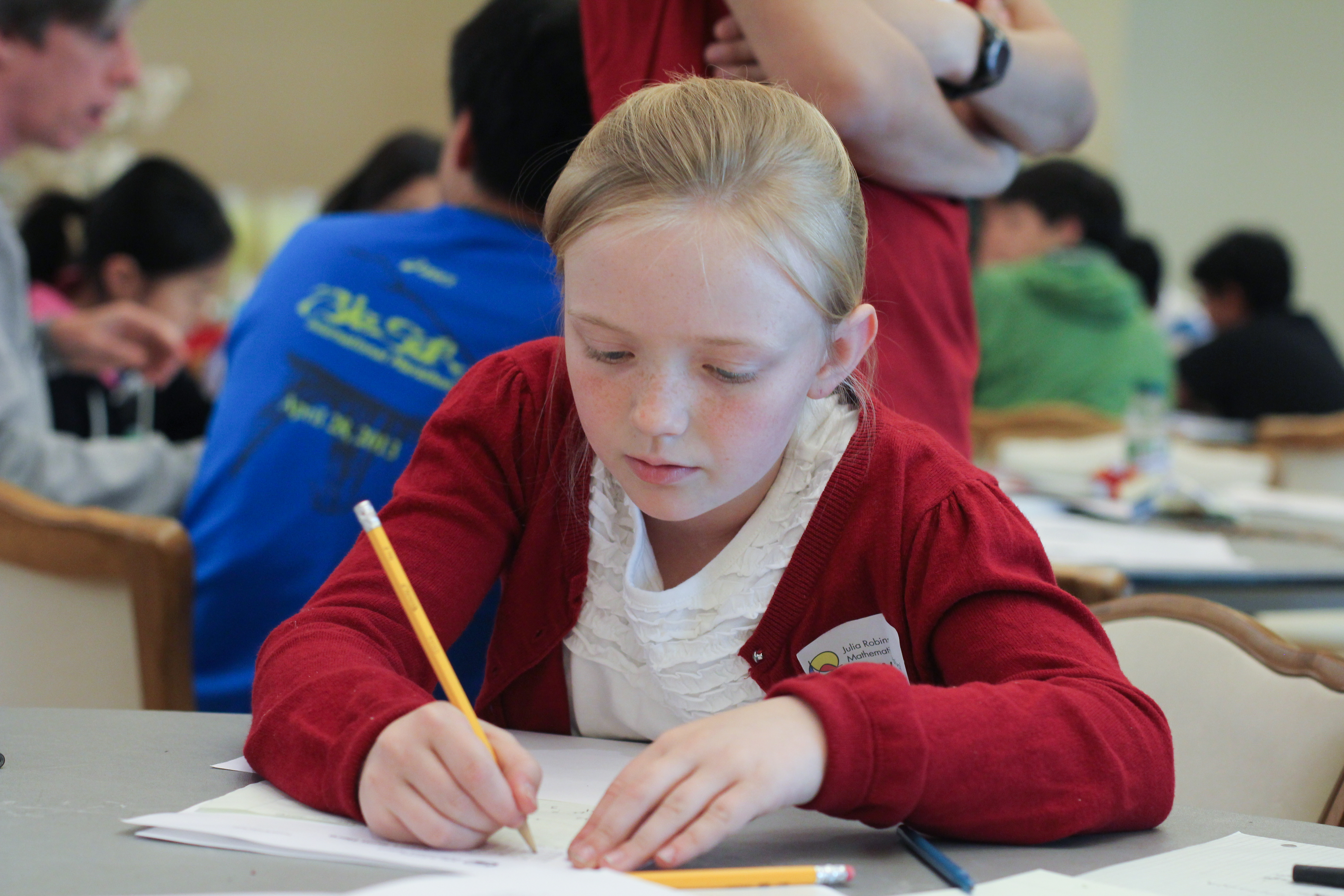
"We want the first steps of the activity to be accessible to everyone and to spark some curiosity about how it works so that students are motivated to persevere with some of the more difficult parts of the activity," Zucker points out. "Ideally an activity will also illuminate a problem-solving strategy or several strategies, so that students begin to see connections among apparently diverse branches of mathematics, as for example when they use parity to win a game, to prove that a process eventually terminates, to show that a certain tiling is impossible, and to help assemble a geometric puzzle."
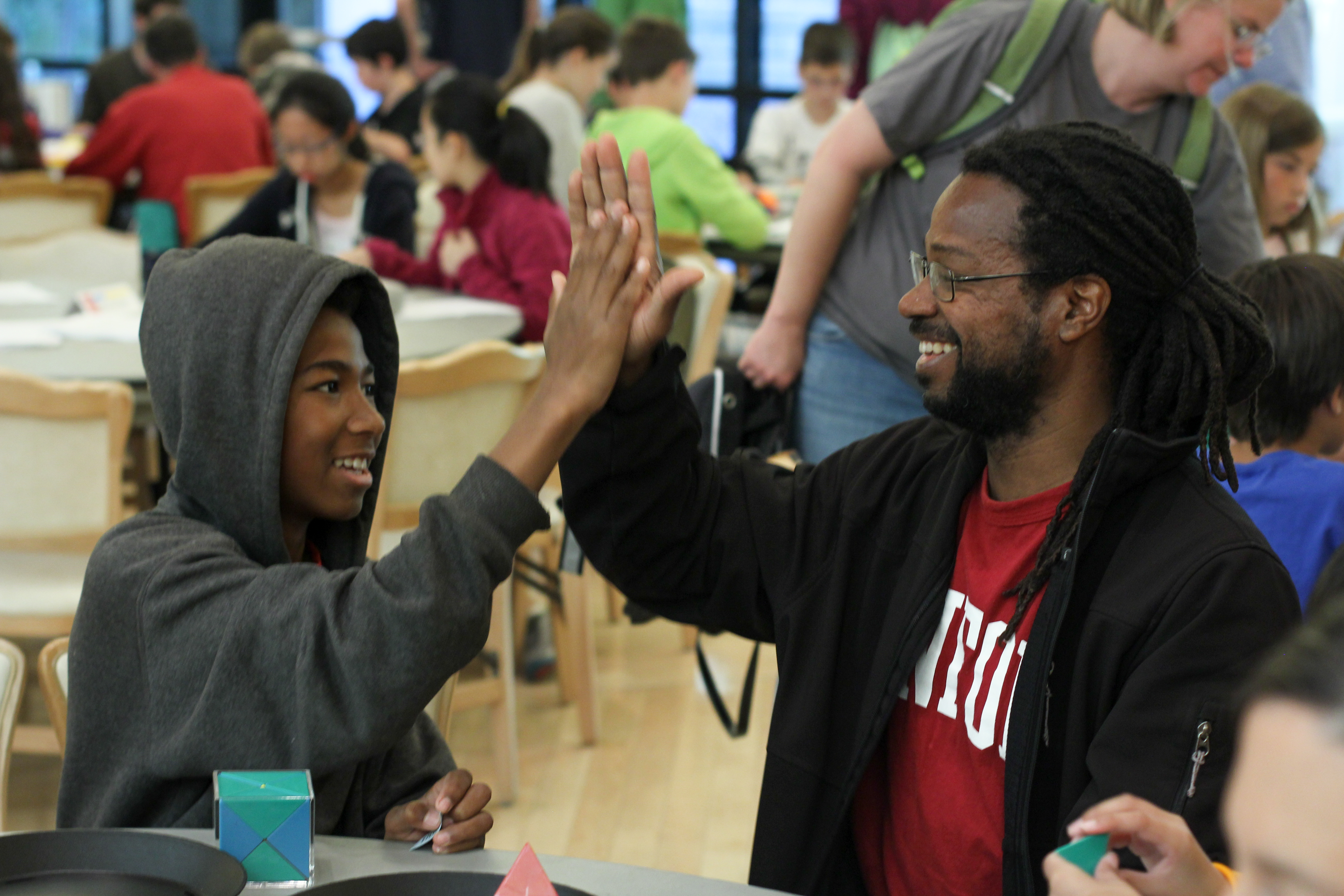
Finding good facilitators is essential, Zucker stresses. "Mathematicians who know their problem-solving deeply and know how to work with kids to develop their problem-solving skills. One anecdote: A sixth-grade girl asked Donald Knuth 'Can you help me with this problem?' and he replied 'I don't know, can you explain the question to me?' That's the kind of mathematician we need to find."
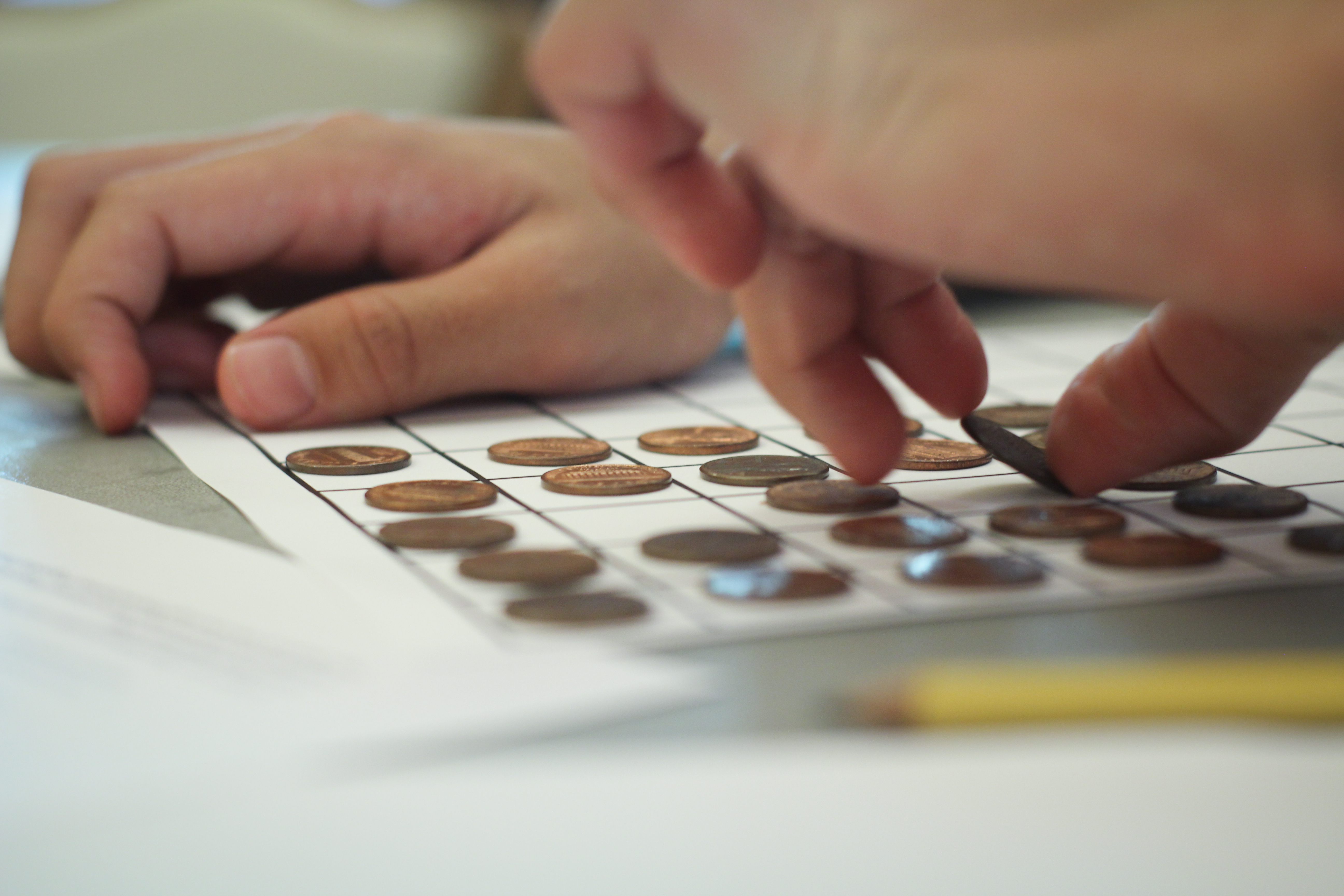
"When we started, we had more corporate hosts, e.g., Google and Pixar," notes Blachman. "Now there are more educational institutions hosts, e.g., Stanford, Berkeley, University of Washington, University of North Caroline at Charlotte, Bentley, Girls Middle School. The Festival has inspired kids and adults. They have fun playing with mathematics. Many people see that math is more than calculations."
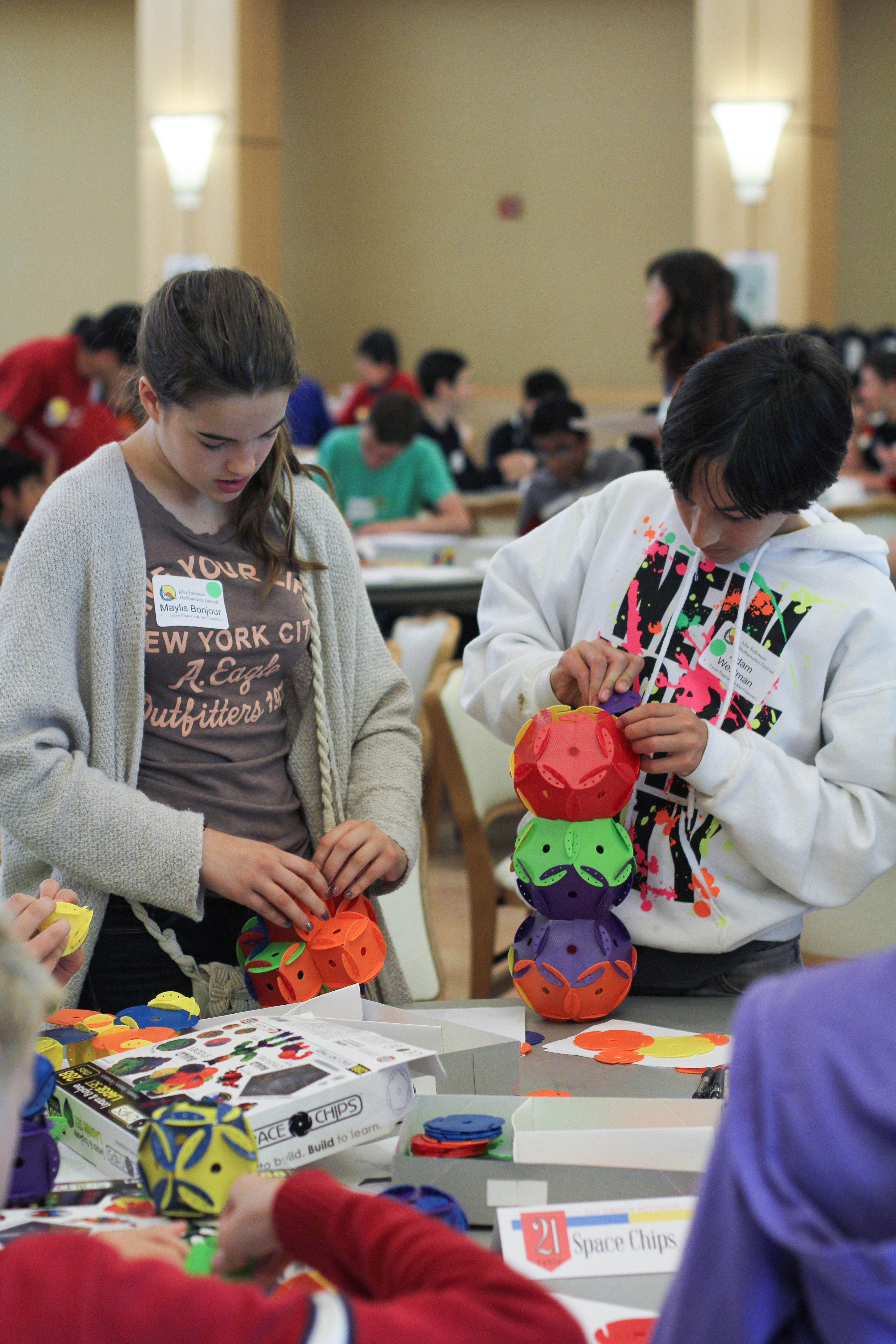
Zucker says, "When a student stays at a table for over half an hour, we encourage the student to move to another table and try some other activities. We provide many problems and problems that are challenging to kids of differing abilities so that every child can find something challenging to do."
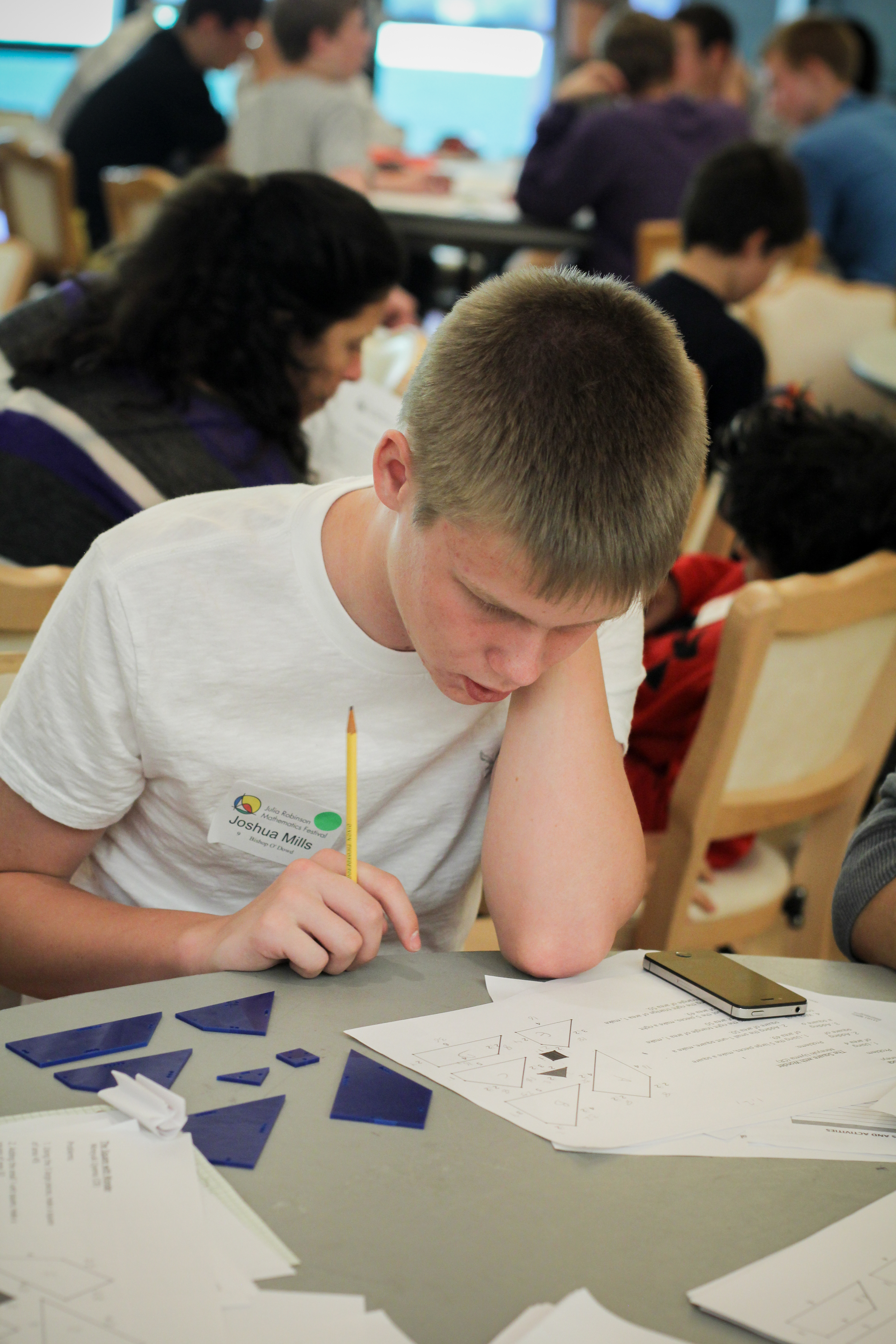
"We named the Festival after Julia Robinson in part to make attendees aware that there are women who are great mathematicians," adds Blachman. "I think more girls attend the Julia Robinson Mathematics Festival than would have had we named it in honor of a man."
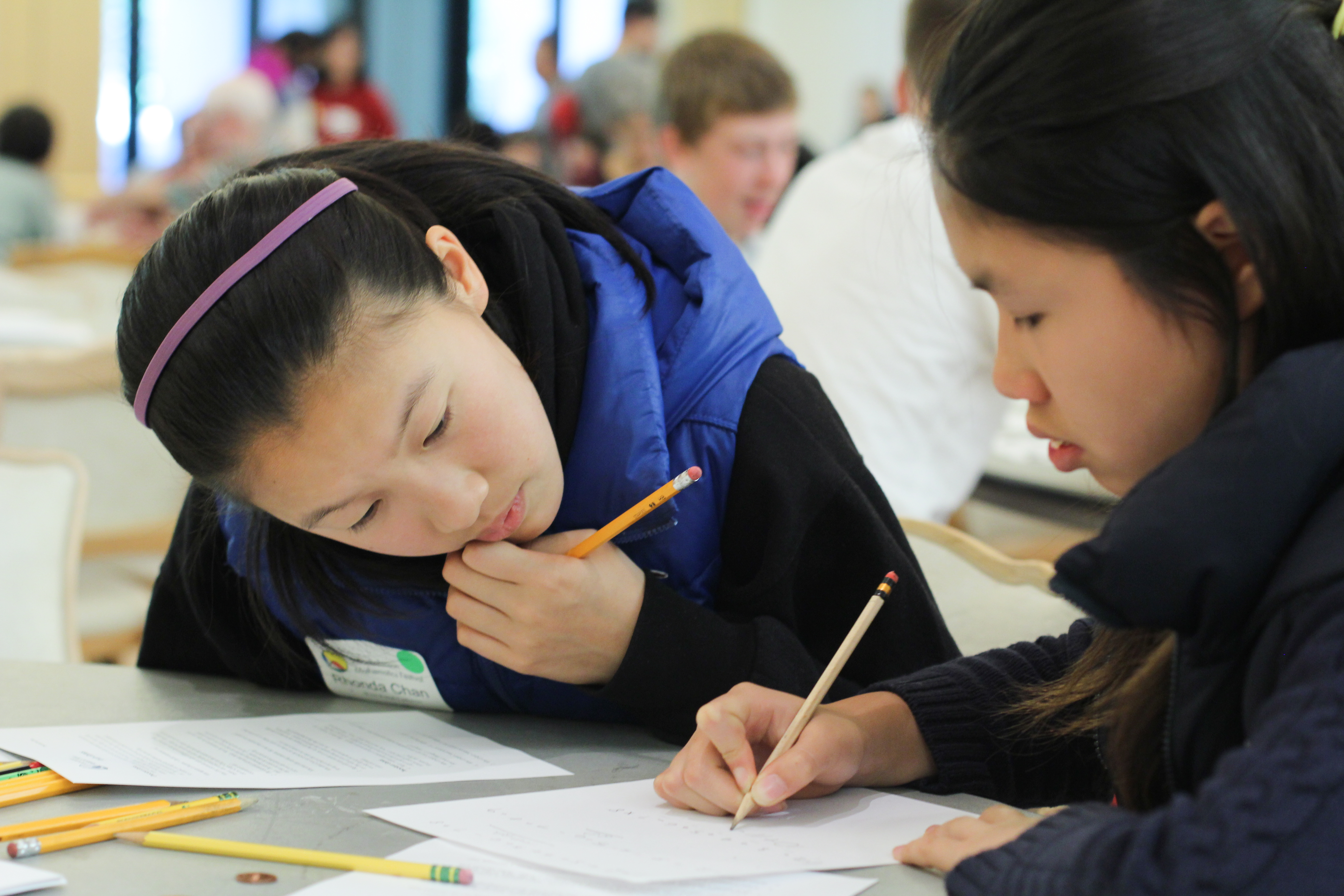
"Facilitators stand by to offer encouragement and assistance, primarily by providing more questions than answers. If a participant shows insight, creativity, perseverance or solves a problem correctly, the facilitator at that table gives the student a raffle ticket," she continued. "These tickets are then traded in for puzzle books and other treats. My goal is to inspire, delight and challenge children, as the Saint Mary's Math Contest did for me. Thanks to Joshua Zucker, Jim Sotiros, David desJardins and many facilitators, the Julia Robinson Mathematics Festival has succeeded in all of these respects."

Some attendees attend for several years in a row, Zucker notes. "I don't know of any seven-year veterans but I know some kids who have come for at least four, and families who in later years bring their younger kids after the original attendees have gone off to college."
Carolyn Bickford's son Neil is a notable, if atypical, success story. "Neil first went to one in 2009, and it has made a great difference in his education. We went every year thereafter through 2012. He's always been passionate about puzzles, math, and computers, so we participated in the Math Counts program our first year homeschooling (2008-2009). He was very discouraged by the process - he found mistakes in the practice material, and the contest itself was ferocious, which isn't his personality. The Julia Robinson math festival was completely different and helped him connect with the math community rather than being a contestant within it. "
Neil was taken under the wing of mathematician Bill Gosper, and has made a name for himself as a blogger and calculator of the continued fraction expansion of pi. He recalls JRMF fondly, "It has a wide selection of accessible mathematics that is presented in such a way that you would see how you could use it in real life. It also combines that with mathematics that you would never use in real life but which is still fun."
Zucker is convinced that the JRMF is making a difference. "We've reached thousands of students and shown them something of what mathematics is really about, and given them enough to think about for weeks. We've helped form partnerships between students and mathematicians that sometimes endure long beyond the festival, leading to original research. We've shown teachers the power of asking hard questions and letting students work with occasional guidance, rather than telling them what to do step-by-step to get an answer. Over the years we've also partnered with a few groups, such as College Track in East Palo Alto, to bring low-income and minority students to the festivals."
Those interested in hosting a Julia Robinson Mathematics Festival can get in touch via info@juliarobinsonmathfestival.org.
Funding is being sought to expand the number of Festivals in the coming year. Donations are tax deductible. Please send your donation to:
Dr. Brian Conrey, Executive Director
American Institute of Mathematics/JRMF
360 Portage Ave.
Palo Alto, CA 94306-2244
AIM's Tax ID: 94-3205114
Please be sure to indicate that it's specifically for the JRMF.
Thanks to Katelyn Weingart for most of the photos.
